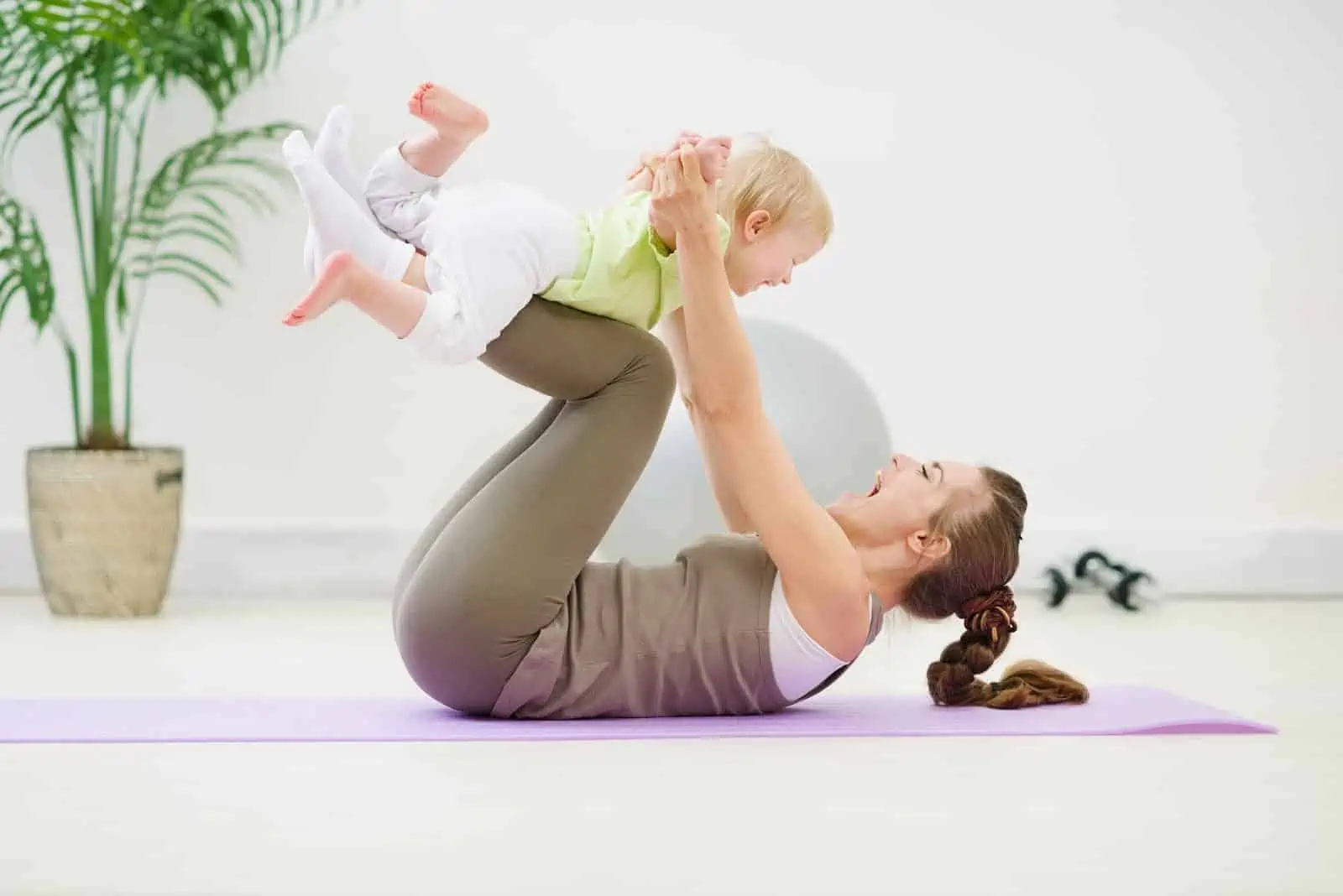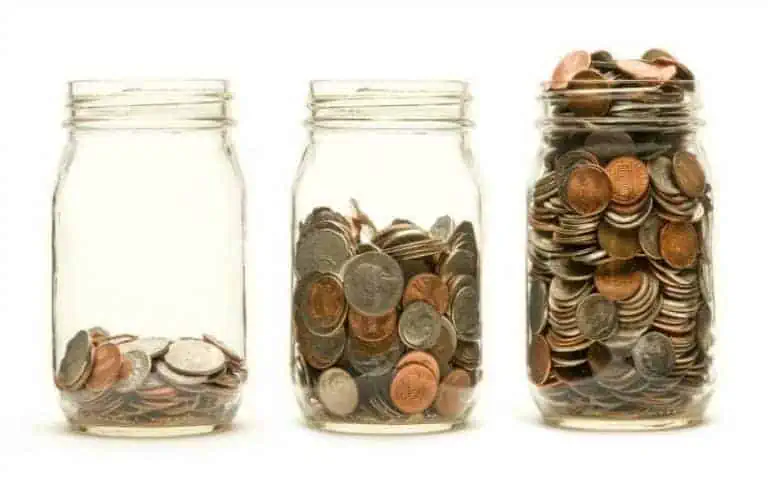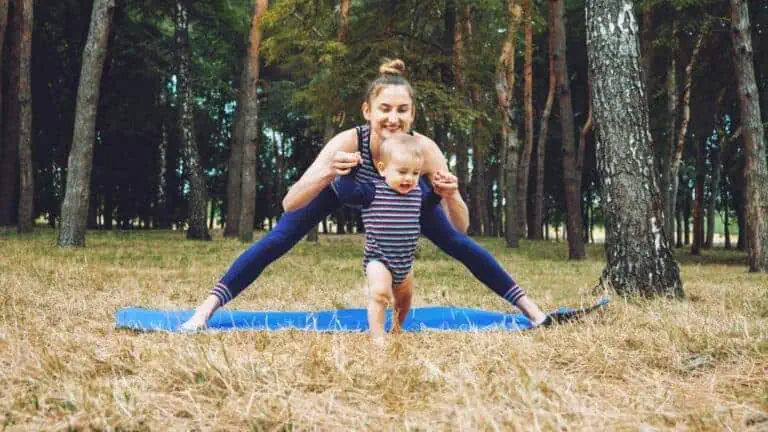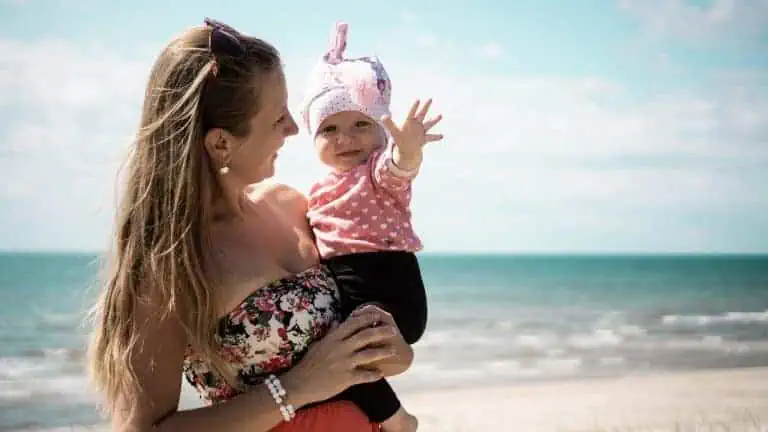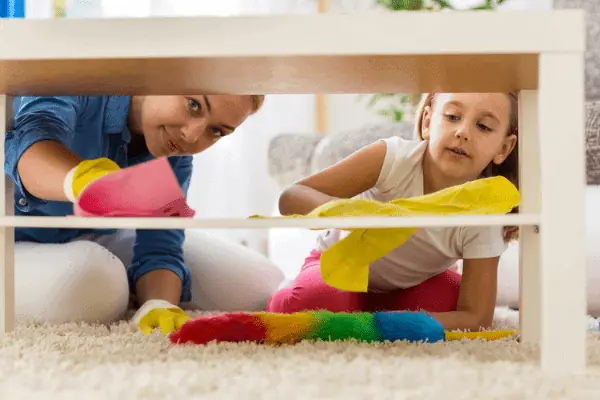What are Examples of Play-Based Learning that You Can Do at Home With Your Toddler?
This post may contain affiliate links. As an Amazon Associate, I earn from qualifying purchases.
This week, Victoria (a Pediatrician) brings us some valuable insight on play-based. It’s a breath of fresh air because it reminds me that I don’t any fancy degrees or toys to help my daughter develop. I hope you enjoy it too!
As a developmental and behavioral pediatrician, one of the questions moms ask me is, “How can I teach my toddler at home?” Moms ask me:
- What should I be doing with my one-year-old? My two-year-old?
- Should I be teaching my toddler to read? Should I be doing a letter a day? A letter a week?
- What can I do now to help my child be more successful in the future?
I have one answer to these questions – JUST PLAY!
The problem is that play has gotten so complicated today. If you search for “toddler play” or “toddler activities”, you’ll get millions of results. Many of them can sound very complicated! Download printables and activity guides. Gather 14 different ingredients just for one play activity. Then, get frustrated because your child spends only a few minutes with that activity you worked so hard to prepare.
If that’s you, read on. Play based learning should NOT be complicated. You’ll see many examples of play based learning that are easy and that anyone can do.
Why is Play Based Learning Important?
Imagine if there is one thing you can do as a mom that would help your child:
- Maximize brain development from an early age
- Learn skills that are important for success such as regulating emotions, getting along with others, and flexible thinking
- Develop a strong foundation of love, trust, and a sense of self-esteem
- Get your child started towards good health
Yes, there is one thing you can do that brings all these benefits. That’s playing with your child! Play is so important to a child’s development that the American Academy of Pediatrics has told pediatricians that we need to prescribe play.
What Do I Need to Get Started With Play Based Learning for My Toddler at Home?
The simplest, most accurate answer is – NOTHING! To do play based learning, all that your child really needs is you.
The internet would have us believe that we need a long list of materials and hours of preparation just to be able to do play based learning. That’s not true!
In fact, particularly for toddlers, the best activities are the simplest. Many of the complicated activities we see on the internet are not appropriate for a toddler’s developmental level.
Here are five tips for play based learning at home with your one-year-old or your two-year-old.
Keep it simple.
Avoid activities that have too many materials and a lot of prep time. As toddler moms, we just don’t have the time for this!
Keep it safe.
Avoid toys and materials that are unsafe. Avoid choking hazards too.
Small toys and materials such as beads, marbles, buttons, and raw pasta shells can be choking hazards. Toys for toddlers should not be able to fit inside the cardboard roll that comes with your toilet paper.
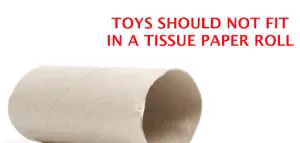
Have a balance of different types of play.
When we think of play based learning, we often think of kids sitting and coloring some printables, or creating arts and crafts.
But these are only one type of play! Your child running around and exploring IS already play based learning, as you’ll see in the examples below.
Encourage your child’s creativity.
If we look at activity guides on the internet, we may feel pressured to follow the instructions there. Cut here. Glue here. Paint within these lines.
However, the best play is creative and child-led. Don’t worry about following rigid instructions during the toddler years. Doing so will only lead to frustration and discouragement.
Choose activities that are appropriate for your child’s developmental level.
This one is tough. It can be difficult to know what is developmentally appropriate play based learning. That’s why I’ve included here many examples of play based learning that are appropriate for a toddler’s developmental level – and also a few examples of things that are not.
Related read: 6 Toddler Activities to Keep them Active and Busy
Examples of Play Based Learning Activities for Toddlers
Here are several examples of play based toddler learning activities. I’ve divided the activities into the five major domains of development. I can’t emphasize enough that you should include activities in all these domains.
Many of these activities are very different from the usual play based learning activities that you see on the internet. You may even think, “Are these really activities? But they are so simple!”
Yes, they absolutely are play based learning activities. In fact, your child learns more from each of these activities than from trying to fill out a worksheet.
Gross Motor: How your child uses trunk, arms and legs for big movements
- Just let your child walk, run, and explore! Why does your two-year-old runs off to explore instead of sitting and tracing a worksheet that you downloaded from the internet? That’s because your two-year-old’s brain needs the exploring more than it needs the worksheet!
- Do simple exercises together. Make it into a game, or dance along with your favorite music. Don’t worry if your child’s movements aren’t that coordinated yet. The important thing is to get moving, and you’ll have lots of fun too.
- Let your child kick, toss, and play with a ball. The ball should be at least the size of a tennis ball, or larger.
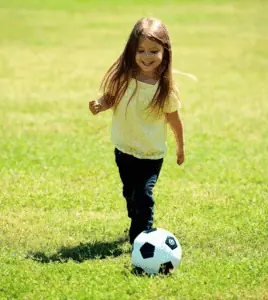
Fine Motor: How your child uses hands and fingers
- Let your toddler scribble freely. At this age, it is best to use large, thick crayons. There is no need to get fancy with this. Just use a blank sheet of paper, a cardboard box, or sheets of paper from junk mail that you may be about to discard anyway. (Make sure that there are no hazards such as staple wires.)
- Bring your child outside and let them touch different items in nature, such as leaves, or the bark of trees.
- Toys such as wooden blocks, connecting blocks, and shape sorters are great for fine motor play during the toddler years. The pieces should be large enough, and should not be able to fit in a toilet paper cardboard roll (or use a choke tube).

Language: How your child speaks and understands what you say
- Just talk with your child! Kids learn best with interactive communication.
- Read picture books together with your child.
- Respond when your child points to something. Look at it and comment on it. Name what your child is pointing at.
For example, if your child points to a bird outside the window, look at it. Look at your child too. Go nearer. Say, “That’s a bird chirping outside the window!” Then pause and let your child respond. This sounds simple, but research shows this is a very powerful technique to build your child’s brain.

Related read: Language Activities for Toddlers
Personal and Self-Help: How your child does everyday tasks such as feeding, dressing, and hygiene
- Let your child help with a part of meal preparation. For example, your child can help pour ingredients that you have already measured out. Your child can also help butter some toast.
- Let your child help during bath time and when getting dressed. Examples are helping to put on soap or pour water.
- Plant a seed or water the plants together.
Related read: How to Keep the House Clean even with Littles
Social and Emotional: How your child handles feelings and gets along with others
- Play peek-a-boo. This simple game is so much fun, and toddlers learn a lot from this too! When your child gets older, turn this into a game of hide and seek.
- Give your child a hug and a kiss. Then look into your child’s eyes, give a big smile, and say, “I love you”. This combination of eye contact, words, gestures and facial expressions is very powerful for building language, social and emotional skills.
- Teach sharing and taking turns. For example, when playing with building blocks, take turns putting one block on top of the previous one. Or take turns coloring or scribbling on a sheet of paper.
As you can see from these activities, learning happens not only when you take time to “do activities”. The best learning happens throughout the day, as part of your routine. You DON’T need to enforce things like “circle time”, or spend hours preparing “sensory bins” that hold your child’s interest for only a few minutes.
Click here to download a FREE guide with more examples of play based learning activities.
Examples of “Play Based Learning” Activities You Should Avoid During the Toddler Years
These activities are NOT helpful during the toddler years. There is plenty of time for these activities later.
- Worksheets. We don’t expect toddlers to be able to trace shapes or letters of the alphabet.
- Complicated arts and crafts. Try to stick to activities that your child can do mostly on their own, or with minimal help. If you find that you are the one doing most of the activity yourself, it’s too complicated.
- “Educational” apps. Research shows that toddlers can’t learn well from screen based media.
- Academic activities. Letter-a-day or letter-a-week activities are great for older preschoolers. But these are too advanced for toddlers. You’ll just tire yourself preparing for these.
Related read: Habits of a Happy Stay at Home Mom
Play Based Learning Should be Fun!
Above all, play based learning should be fun! It is all about the connection between you and your child. Each of the examples listed above are simple but very effective ways to build essential skills during the toddler years.
Don’t spend all your time worrying about whether you are doing it right, or what your child should be learning with the activity. Stop feeling pressured and feeling as if what you are doing is never enough. Focus on what is important. You’ve got this, mama!
Stop spending hours looking for toddler activities that may or may not be appropriate for your child. Get a system that works. If you want a powerful, research-backed method to implement play-based learning at home, check out my online course Learning Through Play 101.
About the author: Dr. Victoria Nolasco is a developmental and behavioral pediatrician, clinical associate professor of pediatrics, and a certified positive discipline coach. She is also mom to a two-year-old. Her blog, effectivemommy.com, is dedicated to happy and confident parenting for toddler moms. Click here to get her free guide to 45 fun, easy, no-prep toddler learning activities.

